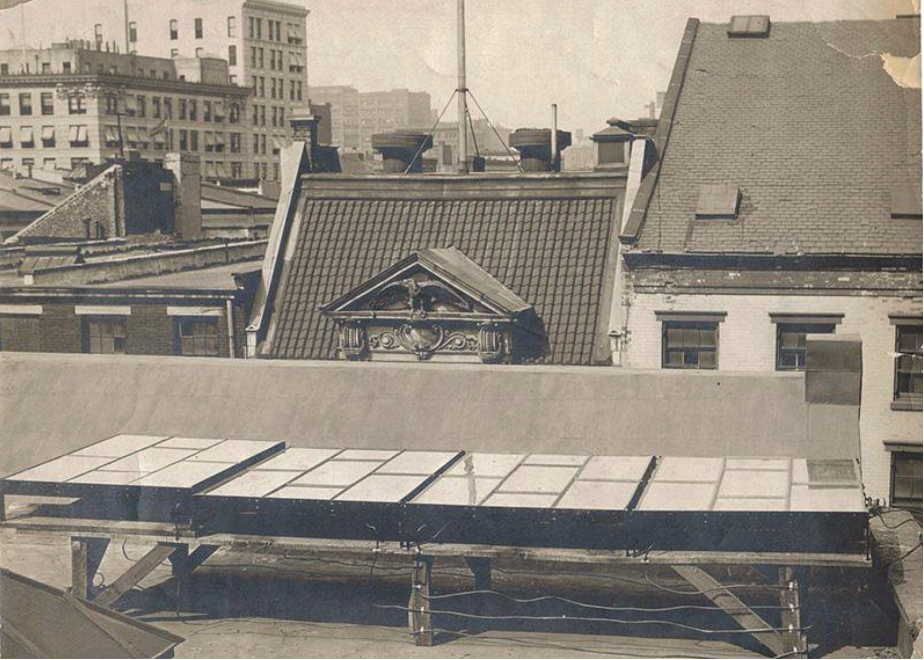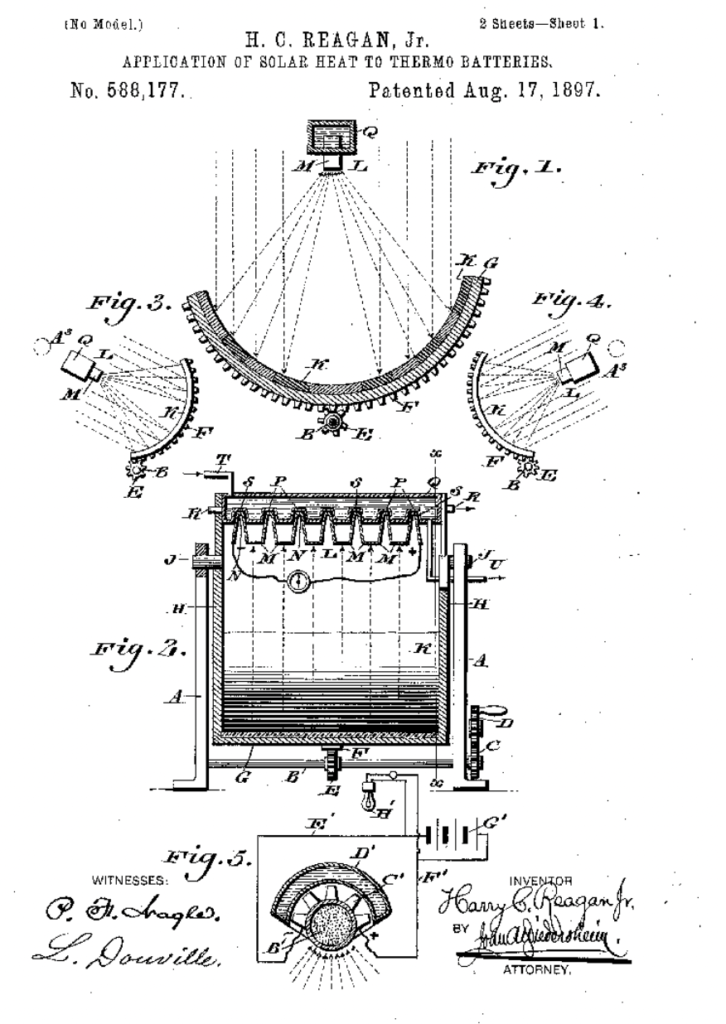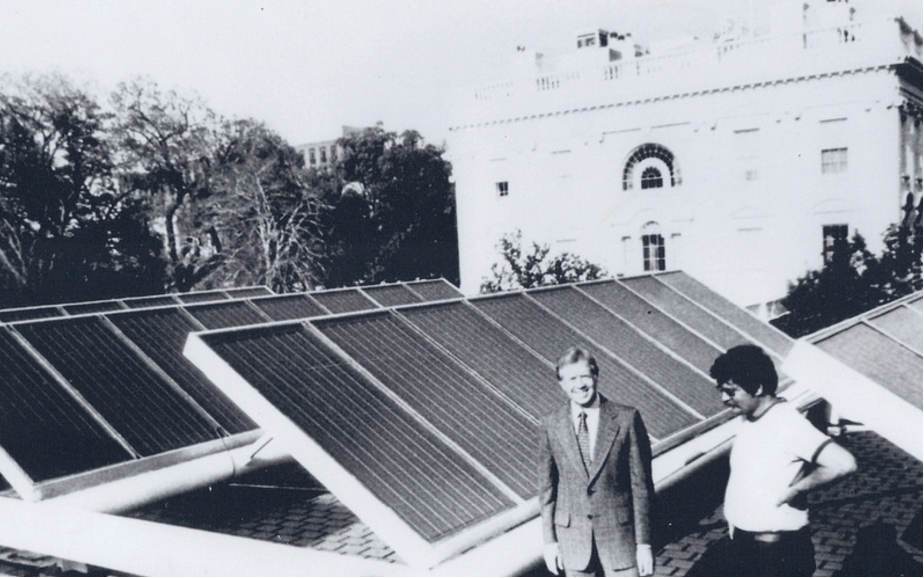Do you know that Becquerel is the unit for radio activity? It is from Edmond Becquerel and he was the very first man who created electricity from sunlight. It was 1839 that he discovered this photo voltaic effect.
But it took some decades before someone took the challenge and made a solar panel. In 1883 it was Charles Fritz, an American who took Selenium and covered it with gold. It worked. It was expensive, but it worked. He could capture about 1% of the solar energy to get electricity from it.

A few years later already, Edward Weston started to focus light with lenses, then on a solar cell. This cell became hot, then electrons start moving, which is electricity.
Meanwhile, the German Heinrich Hertz (the unit for Ffrequency is named after him) discovered that you get more power whit Ultra Violet light, better than visible light. This is called the photo electric effect and still today the solar cell uses this to create electricity. Right away, in 1888, the Russian scientisch Alexander Stoletov built a solar cell and proved it.

One of the many inventions is this apparatus to collect and focus sunlight and put it together in a heat battery, and from that heat one could make electricity OK, it is a bit off-topic, but it is a beautiful picture, though?
A new wave
In the 1950s a big breakthrough came. Three men from Bell Laboratories, Daryl Chapin, Calvin Fuller, and Gerald Pearson, invented the Silicon solar panel. So no gold nor Selenium, but just ordinairy Silicon which is everywhere to find. OK, they were expensive to buitd, but the efficiency was 6 percent in stead of the lousy 1 or 2 percent.
It helped NASA al lot to get electricity on their space rockets.
Later, in In 1970 the first building was provided with a solar cell roof, it is the Solar One building of the Delaware University.
More people became enthousiast. President Carte put 32 panels on the White House as a statement: ““the power of the sun to enrich our lives as we move away from our crippling dependence on foreign oil.” His administration set up fiinancial incentives promoting renewables.

President Carter with ‘his’ solar panels on the White House roof, as a first example and a start for a trickle down
But the wave waned away. Reagan came to power, said that the government was the problem, not the solution, and teared the solar panels down, with the excuse of roof repairs, but never put them back on. Carters incentive system was ended and the first fledging American solar industry died shorty after it.
Percent. by percent
From that time the solar industry was mostly settled in Europe. Solar was expensive, but many governments were willing to subsidise. At the end of the 1980’s you could find a solar panel here and there on a boat. A subsidized one. And what did they deliver? Already over 10% and every three or four years it could grow a percent.
Still, it was not profitable. A pity was that all subsidies were not continuous, so the industry, so there could not grow an industry with continuity. And, on the other hand the oil industry was powerful, and well subsidized.
The wave till now
In the early 2000 years things changed. When solar panels could deliver over 15 percent, a tipping point was reached. The USA and many European states started to give grants (or tax incentives) for installing and using solar power. A bottom-up approach. This was competitive with the fossil driven power.
With that subsidy many people dared to cover their roof completely. The amount left over, could be sold to the power distribution company, and based on a long term contract. The first percent of people took the chance.
Then in some five to ten years these changes came:
China’s solar industry grew and could deliver panels for less than any Western industry could.
Al Gore’s movie ‘An inconvenient Truth’ became known worldwide.
The subsidy regulations still continued.
The efficiency of the general solar panel passes the 20 percent.
So, many many people became interested, that it was sheer luck if you could get the grant. People tried it, tier after tier. And when they did not succeed, they installed without subsidy.
It also helps that the banks offer zip interest rates since 2010. The credo: Don’t put your money on the bank, but put it on your roof, with solar.
Now we are in 2023. The reality now is, that solar power beats fossil fuel power, despite the fossil fuel companies are still well granted with subsidies and tax cuts. There is coming more and more pressure to cut these billions down to zero.
Meanwhile, Putin makes a mess in the fossil fuel market and the fossil rates are expected to go up.
What would the next wave look like?

